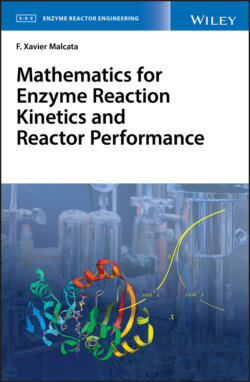Читать книгу Mathematics for Enzyme Reaction Kinetics and Reactor Performance - F. Xavier Malcata - Страница 32
2.3.4 Inverse Functions
ОглавлениеIn attempts to solve equations explicitly involving trigonometric functions, one may to advantage resort to their inverse functions; this includes sin−1 x, which develops graphically as outlined in Fig. 2.13a. Only the portion of sin−1 x between −π/2 and π/2 – corresponding to x within interval [−1,1], is normally considered, as indicated in bold in Fig. 2.13 a; otherwise a function would not result, since more than one value would be taken by the dependent variable for any given value of the independent variable. By the same token, one may define the inverse of cosine, cos−1 x – as also plotted in Fig. 2.13 a; in this case, one usually restricts to cos−1 x between 0 and π, which corresponds to x spanning also interval [−1,1]. Note that the curves representing inverse functions may be obtained through rotation of the original curves by π rad around the bisectrix of the odd quadrants – see Fig. 2.13a vis‐à‐vis with Fig. 2.10b.
A similar rationale may be pursued to obtain the inverse tangent and cotangent, i.e. tan−1 x and cotan−1 x; these are plotted in Fig. 2.13b. In both cases, argument x spans the whole real axis – but one usually restricts attention to the portion comprised between −π/2 and π/2 in the case of tan−1 x, and to the portion comprised between 0 and π in the case of cotan−1 x, so as to back up true (i.e. single‐valued) functions.
